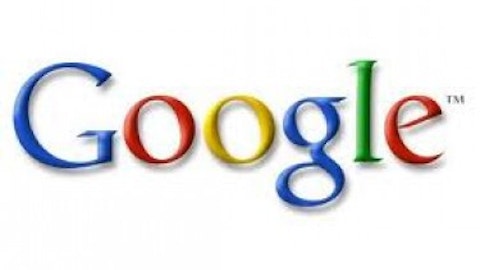
We discuss Portland, Ore., a city that has taken steps to reduce urban sprawl and promote transit and bicycling. Speck explains some of the real-world benefits the city enjoys as a result of the fact that its residents drive 20% less than people in other American cities.
The Motley Fool’s chief investment officer has selected his No. 1 stock for the next year. Find out which stock it is in the special free report: “The Motley Fool’s Top Stock for 2013.” Just click here to access the report and find out the name of this under-the-radar company.
Isaac Pino: Other companies have embraced this idea, in a way. Amazon.com, Inc. (NASDAQ:AMZN)‘s set up some offices in a walkable area of Seattle. It’s near downtown, if not in downtown.
Jeff Speck: Yeah, it’s the new extension to downtown that’s served by the new streetcar.
Isaac: OK, and Google Inc (NASDAQ:GOOG) is another name that comes to mind. Tony Hsieh at Zappos is embarking on this huge project called the Downtown Project. You mentioned the collisions and random encounters in some of these spaces. That’s one of the things that he points out a lot.
He says that research has shown that every time the size of a city doubles, productivity or innovation per resident increases by 15%, but when companies get bigger oftentimes their productivity per employee generally goes down. Hsieh broke ground on this $350 million project, a lot of which is his own wealth.
You outline three reasons why an economic advantage will begin to accrue to walkable cities. Can you give us some examples, or just elaborate on those three drivers that you identified?
Speck: Yes, but you’ve reminded me of something that is very relevant to your clientele, which is that William Whyte, who wrote The Organization Man many years ago, a very well-known book from the ’70s, probably. He wrote a book called City: Rediscovering the Center, and as part of the research for this book, he tracked the stock performance of a whole bunch of companies that chose to move out of Manhattan in the ’70s, against those who chose to stay in Manhattan, and found tremendous… what’s the word you guys use?
Isaac: Returns. Appreciation.
Speck: Appreciation and returns for — by the way, I was an investment banker, briefly, so don’t let me fool you.
He found tremendous returns for those who stayed in the city, compared to an overall slight loss for those who chose to move out of the city. Most of them moved to within five miles of the CEO’s house, so you get a good sense of why they made that choice.
The drivers of economic success from walking… I’m trying to remember what precise section of the book, so let me see what you wrote there.
Yeah, we already talked about the first two. We talked about how urban living is more appealing, and we talked about these massive demographic shifts. This is my opportunity to briefly talk about what happened in Portland.
In 1996, Portland reversed the trend that every other American city did not reverse, which is they started driving less. They achieved that reversal because in the ’70s and the ’80s they started doing a few things that were the opposite of what other cities were doing.
While every other city was growing this big spare tire of sprawl, they instituted an urban growth boundary. While most other cities were investing in highways, they invested in transit and in bicycling. While many cities were broadening their streets and reaming out their downtown streets for faster flow of traffic, they actually instituted a “skinny street” program in Portland.
These efforts, and others, have reduced the amount that the typical Portlander drives. They now drive 20% less than a typical American city, and it calculates to about four miles a day, or 11 minutes a day, per person.
Joe Cortright, an economist, wrote this great white paper called “Portland’s Green Dividend.” He determined that the money not spent on driving calculates out to about 1.5% of GDP. The time not wasted driving calculates out to another 2% of GDP, so they’re saving about 3.5% of GDP just by how they choose to move around.


